You're using an outdated browser. Please upgrade to a modern browser for the best experience.

Submitted Successfully!
Thank you for your contribution! You can also upload a video entry or images related to this topic.
For video creation, please contact our Academic Video Service.
| Version | Summary | Created by | Modification | Content Size | Created at | Operation |
|---|---|---|---|---|---|---|
| 1 | Yudong Zhang | -- | 1509 | 2023-06-09 11:28:24 | | | |
| 2 | Jason Zhu | Meta information modification | 1509 | 2023-06-12 08:14:40 | | |
Video Upload Options
We provide professional Academic Video Service to translate complex research into visually appealing presentations. Would you like to try it?
Cite
If you have any further questions, please contact Encyclopedia Editorial Office.
Liu, Z.; Wang, S.; Zhang, Y.; Feng, Y.; Liu, J.; Zhu, H. Artificial Intelligence in Food Safety. Encyclopedia. Available online: https://encyclopedia.pub/entry/45385 (accessed on 16 December 2025).
Liu Z, Wang S, Zhang Y, Feng Y, Liu J, Zhu H. Artificial Intelligence in Food Safety. Encyclopedia. Available at: https://encyclopedia.pub/entry/45385. Accessed December 16, 2025.
Liu, Zhe, Shuzhe Wang, Yudong Zhang, Yichen Feng, Jiajia Liu, Hengde Zhu. "Artificial Intelligence in Food Safety" Encyclopedia, https://encyclopedia.pub/entry/45385 (accessed December 16, 2025).
Liu, Z., Wang, S., Zhang, Y., Feng, Y., Liu, J., & Zhu, H. (2023, June 09). Artificial Intelligence in Food Safety. In Encyclopedia. https://encyclopedia.pub/entry/45385
Liu, Zhe, et al. "Artificial Intelligence in Food Safety." Encyclopedia. Web. 09 June, 2023.
Copy Citation
Artificial Intelligence (AI) technologies have been powerful solutions used to improve food yield, quality, and nutrition, increase safety and traceability while decreasing resource consumption, and eliminate food waste.
artificial intelligence
food safety
authorship
1. Introduction
Artificial intelligence (AI), as a far-reaching emerging technology, has experienced birth, ups, and downs, and the harvest, not only impacting our personal lives but also essentially transforming how firms make decisions [1]. Machine learning (ML) is currently a main branch of AI, integrating probability theory, statistics, and convex optimization to resolve the problems of computer vision, speech recognition, natural language processing, robot control, etc. [2]. Compared to other ML techniques, deep learning (DL) reveals excellent performance in image recognition, speech recognition, molecule prediction, particle accelerator data analysis, brain circuit reconstruction, etc. [3]. It is known that AI has three pillars, namely, data, algorithms, and computing power. By contrast, the food safety system has arisen as one of the most important application scenarios that use data-intensive approaches to drive the sustainable development of human beings and minimize its environmental impact.
Food safety is extremely important for human health and survival and deserves more advanced technologies to protect both consumers from foodborne illness and firms from reputational damage [4]. AI and big data, regarded as the fourth industrial revolution, already have a significant impact on the food industry by increasing food production, quality, and nutrition, and reducing resource consumption and waste [5]. Furthermore, recent studies have explored AI-based methods to deal with dietary problems that usually lead to chronic diseases such as hypertension [6].
2. Current Status of Al Research
2.1. Annual Trends
A number of publications have been released since 2019, as shown in Figure 1, indicating explosive interest in this subject. Due to the constant progress of AI technology, more and more applications are being employed to predict crop yields, control food quality, and reduce foodborne illness. The increasing trend seems set to continue, and more studies may emerge.

Figure 1. Al-related publications on food safety from 2012 to 2022.
2.2. Distribution of Publications
Figure 2 shows the analysis of the discipline category of the literature pieces. After analysing the discipline categories of all the selected pieces of literature, the top five discipline categories with the highest number of publications were food science technology (410 articles), environmental sciences (280 articles), remote sensing (215 articles), nutrition dietetics (193 articles), and imaging science information systems (179 articles). This indicated that the interdisciplinary integration characteristics of AI in food safety were evident. Furthermore, these results implied that the research on AI had expanded into various fields. However, there are still some significant gaps in the depth and breadth of these fields.

Figure 2. AI-related publications in different discipline categories.
2.3. Publication Timeline
In order to specifically describe the research on AI in food safety, researchers chose the five most popular subfields and then drew the publication timeline, as shown in Figure 3. The annual publications in these five fields presented a gradually increasing trend from 2012 to 2022, but the number of published papers before 2018 fluctuated to varying degrees. Since 2018, three fields, namely food science technology, environmental sciences, and nutrition dietetics, have been growing rapidly. This trend meant rapid expansion and recent advances in AI technologies. In addition, researchers noticed a declining trend in the fields of remote sensing, imaging science, and photographic technology after 2021. In summary, although AI in food safety increased attention in general, there were still significant differences in each subfield concerning AI development.

Figure 3. Annual publications within the five most popular subfields.
3. Co-Citation Analyses
3.1. Author Co-Citation Analysis
Author co-citation analysis depicted the co-citation author network generated by CiteSpace to show the interrelationships among cited authors and identify the authors with strong influence [7]. Figure 4 demonstrates the co-citation network of AI in food safety research during 2012–2022. To show the author co-citation network clearly, researchers just displayed the authors with the most cited references in each time slice. There were 421 nodes and 1892 links in the author co-citation network. These nodes were plotted with citation tree rings containing several time slices. The citation tree rings’ thickness indicates the authors’ citation frequency in the corresponding time slice.
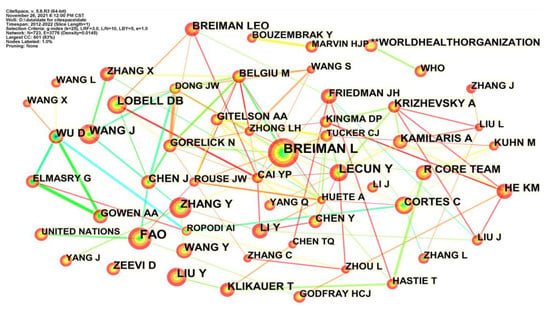
Figure 4. The author co-citation network of AI-related publications.
3.2. Reference Co-Citation Analysis
Reference co-citation networks represented the structure and development of a field in detail, which was composed of the nodes and connections among co-cited references [8]. The reference co-citation network from 2012–2022 is shown in Figure 5, containing 622 effective nodes and 2264 links. Every node in Figure 5 showed an article cited by other literature, while the links represented their co-cited relationship. These nodes were also displayed in terms of tree rings to show the citation frequency of an article. The thickness of citation tree rings indicates the citation frequency of these articles in the corresponding time slice. The thickest nodes with tree rings indicate the most important references and lay out the starting point of related research. The article with the thickest citation rings, published in Remote Sensing of Environment, introduced Google’s powerful computing capability and bravely solved many social problems such as diseases, food security, and water resources management [9]. The highest citation frequency also indicated that the application of remote sensing technology in food safety had been one of the hot issues in recent years.
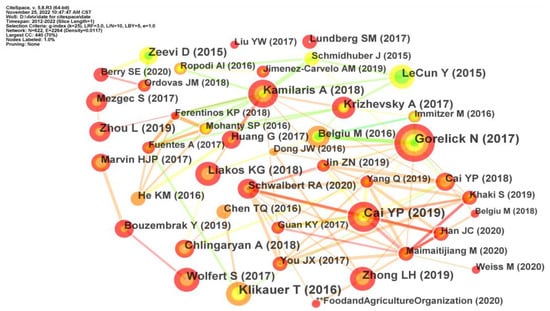
Figure 5. The co-citation network of AI-related publications.
3.3. Citation Burst Analysis
Citation burst analysis [10] was used to search the representative articles with high citation growth rates. A citation burst is an abrupt increase in citations for an article. For example, if the article’s citations suddenly increased in recent years, this reference had a strong citation burst [11]. As shown in Figure 6, the articles with strong influences signified the new pivotal turning points in the subfield research and indicated profound prospects and future trends. The red lines represented the time range of a reference citation burst, and the strength index meant the citation growth rate.

Figure 6. Starting point literature in related subfields.
Among the 15 references, the burst strength of LeCun et al. (2015) [3] was 12.05, the strongest during the period from 2018 to 2020. This provided a clear introduction and profound interpretation of deep learning, which laid a strong theoretical foundation for subsequent research on deep learning and made a great contribution to research on AI in food safety. In addition, Schmidhuber (2015) summarized DL in the supervised and unsupervised neural networks, feedforward, and recurrent neural network [12].
In the subfield of food science technology, hyperspectral and multispectral imaging were proven to be effective non-destructive detection techniques for assessing food quality objectively and accurately and may be of interest in computer vision applications for the precise prediction of bacterial loads [13][14][15][16][17][18].
Furthermore, AI applications can be classified into two types: food safety evaluation and authenticity claims [19]. In the subfield of nutrition dietetics, Zeevi et al. (2015) designed an algorithm that combined personal metrics with behaviour habits to customize dietary intake by predicting glycemic responses [20]. In the subfield of remote sensing, Mosleh et al. (2015) reviewed the fusion of optical images, microwave technologies, and AI methods for mapping areas and forecasting yield [21]. In the subfield of environmental sciences, Xiong et al. (2017) proposed a comprehensive approach using pixel-based classification and object-based segmentation for mapping the geographical extent of croplands, which was of great importance for field management [22]. In the subfield of imaging science information systems, Simonyan and Zisserman (2015) [23] proposed two advanced CNN models to improve accuracy, while He et al. (2016) [24] presented a novel algorithm to simplify the training of CNNs. Recently, machine learning has been increasingly applied to explore the rapidly increasing foodborne pathogen genome resources and their metadata. Tree boosting is a highly effective machine-learning method and has been widely used by researchers [25].
3.4. Journal Co-Citation Analysis
Journal co-citation analysis revealed the structure and distribution of knowledge by displaying the network of the co-cited journals. As shown in Figure 7, there were 30 journals containing 159 effective nodes and 845 links. Every node represents a journal in the datasets. These nodes were plotted in terms of tree rings to show the citation frequency of a journal. The thickness of the citation tree rings indicates the citation frequency of these journals in the corresponding time slice. The links between these nodes display the co-citation relationships of different journals. The most frequently cited journals among the selected datasets are PLoS ONE, Computers and Electronics in Agriculture, Nature, Remote Sensing, and Scientific Reports. From 2019 to 2022, the growth rate of citations of these five journals was significantly higher than before, as shown in Figure 8.

Figure 7. The journal co-citation network of AI related publications.
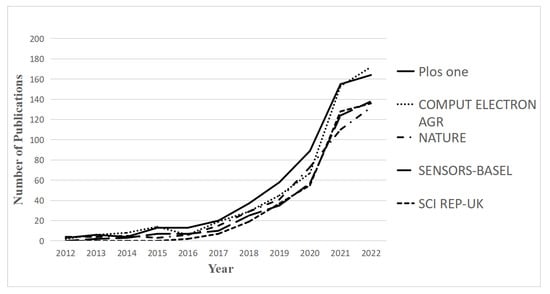
Figure 8. The number of co-citation articles of the top 5 journals in 2012~2022.
4. Co-authorship Analysis
The institute and country co-authorship network revealed the cooperative relationships among different countries and academic units [26]. As shown in Figure 9, there were 391 effective nodes and 582 links, including the top 50 institutes. These nodes were plotted in terms of tree rings—the thicker the tree rings, the more active the institutes. As shown in Figure 10, the top five institutions in terms of the number of publications were Chinese Acad Sci, Univ Chinese Acad Sci, China Agr Univ, Zhejiang Univ, Chinese Acad Agr Sci, etc. The results of co-analysis by institutions and countries indicated that China had paid much attention to AI applications in food safety.
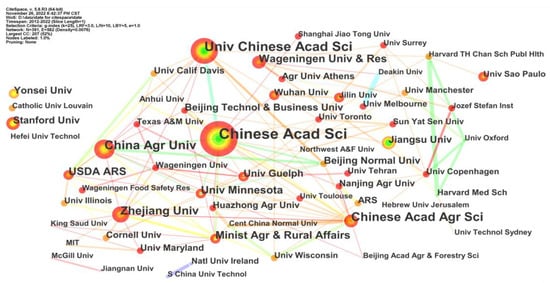
Figure 9. The institute co-authorship network of AI-related publications.
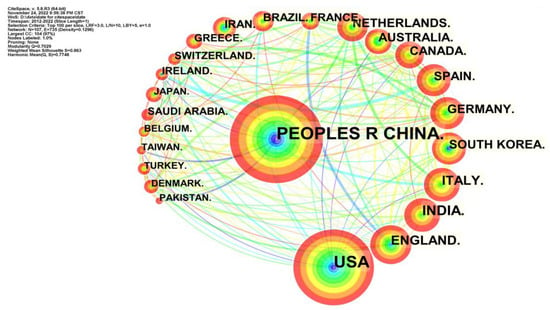
Figure 10. The country co-authorship network of AI-related publications.
References
- Haenlein, M.; Kaplan, A. A brief history of artificial intelligence: On the past, present, and future of artificial intelligence. Calif. Manag. Rev. 2019, 61, 5–14.
- Jordan, M.I.; Mitchell, T.M. Machine learning: Trends, perspectives, and prospects. Science 2015, 349, 255–260.
- LeCun, Y.; Bengio, Y.; Hinton, G. Deep learning. Nature 2015, 521, 436–444.
- Kudashkina, K.; Corradini, M.G.; Thirunathan, P.; Yada, R.Y.; Fraser, E.D. Artificial Intelligence technology in food safety: A behavioral approach. Trends Food Sci. Technol. 2022, 123, 376–381.
- Kim, S.S.; Kim, S. Impact and prospect of the fourth industrial revolution in food safety: Mini-review. Food Sci. Biotechnol. 2022, 31, 399–406.
- Tahir, G.A.; Loo, C.K. A comprehensive survey of image-based food recognition and volume estimation methods for dietary assessment. Healthcare 2021, 9, 1676.
- White, H.D.; McCain, K.W. Visualizing a discipline: An author co-citation analysis of information science, 1972–1995. J. Am. Soc. Inf. Sci. 1998, 49, 327–355.
- Persson, O. Identifying research themes with weighted direct citation links. J. Informetr. 2010, 4, 415–422.
- Gorelick, N.; Hancher, M.; Dixon, M.; Ilyushchenko, S.; Thau, D.; Moore, R. Google Earth Engine: Planetary-scale geospatial analysis for everyone. Remote Sens. Environ. 2017, 202, 18–27.
- Chen, C. CiteSpace II: Detecting and visualizing emerging trends and transient patterns in scientific literature. J. Am. Soc. Inf. Sci. Technol. 2006, 57, 359–377.
- Chen, C.; Dubin, R.; Kim, M.C. Emerging trends and new developments in regenerative medicine: A scientometric update (2000–2014). Expert Opin. Biol. Ther. 2014, 14, 1295–1317.
- Schmidhuber, J. Deep learning in neural networks: An overview. Neural Netw. 2015, 61, 85–117.
- Feng, Y.Z.; Sun, D.W. Determination of total viable count (TVC) in chicken breast fillets by near-infrared hyperspectral imaging and spectroscopic transforms. Talanta 2013, 105, 244–249.
- Barbin, D.F.; ElMasry, G.; Sun, D.W.; Allen, P. Predicting quality and sensory attributes of pork using near-infrared hyperspectral imaging. Anal. Chim. Acta. 2012, 719, 30–42.
- Wu, D.; Sun, D.W.; He, Y. Application of long-wave near infrared hyperspectral imaging for measurement of color distribution in salmon fillet. Innov. Food Sci. Emerg. Technol. 2012, 16, 361–372.
- ElMasry, G.; Sun, D.W.; Allen, P. Non-destructive determination of water-holding capacity in fresh beef by using NIR hyperspectral imaging. Food Res. Int. 2011, 44, 2624–2633.
- Panagou, E.Z.; Papadopoulou, O.; Carstensen, J.M.; Nychas, G.J.E. Potential of multispectral imaging technology for rapid and non-destructive determination of the microbiological quality of beef filets during aerobic storage. Int. J. Food Microbiol. 2014, 174, 1–11.
- Qin, J.; Chao, K.; Kim, M.S.; Lu, R.; Burks, T.F. Hyperspectral and multispectral imaging for evaluating food safety and quality. J. Food Eng. 2013, 118, 157–171.
- Ropodi, A.I.; Panagou, E.Z.; Nychas, G.J. Data mining derived from food analyses using non-invasive/non-destructive analytical techniques; determination of food authenticity, quality & safety in tandem with computer science disciplines. Trends Food Sci. Technol. 2016, 50, 11–25.
- Zeevi, D.; Korem, T.; Zmora, N.; Israeli, D.; Rothschild, D.; Weinberger, A.; Ben-Yacov, O.; Lador, D.; Avnit-Sagi, T.; Segal, E. Personalized nutrition by prediction of glycemic responses. Cell 2015, 163, 1079–1094.
- Mosleh, M.K.; Hassan, Q.K.; Chowdhury, E.H. Application of remote sensors in mapping rice area and forecasting its production: A review. Sensors 2015, 15, 769–791.
- Xiong, J.; Thenkabail, P.S.; Tilton, J.C.; Gumma, M.K.; Teluguntla, P.; Oliphant, A.; Congalton, R.G.; Yadav, K.; Gorelick, N. Nominal 30-m cropland extent map of continental Africa by integrating pixel-based and object-based algorithms using Sentinel-2 and Landsat-8 data on Google Earth Engine. Remote Sens. 2017, 9, 1065.
- Simonyan, K.; Zisserman, A. Very deep convolutional networks for large-scale image recognition. arXiv 2015, arXiv:1409.1556.
- He, K.; Zhang, X.; Ren, S.; Sun, J. Deep residual learning for image recognition. In Proceedings of the IEEE Conference on Computer Vision and Pattern Recognition, Las Vegas, NV, USA, 27–30 June 2016; pp. 770–778.
- Chen, T.; Guestrin, C. Xgboost: A scalable tree boosting system. In Proceedings of the 22nd ACM SIGKDD International Conference on Knowledge Discovery and Data Mining, San Francisco, CA, USA, 13–17 August 2016; pp. 785–794.
- Zhao, X. A scientometric review of global BIM research: Analysis and visualization. Autom. Constr. 2017, 80, 37–47.
More
Information
Subjects:
Food Science & Technology
Contributors
MDPI registered users' name will be linked to their SciProfiles pages. To register with us, please refer to https://encyclopedia.pub/register
:
View Times:
1.0K
Revisions:
2 times
(View History)
Update Date:
12 Jun 2023
Notice
You are not a member of the advisory board for this topic. If you want to update advisory board member profile, please contact office@encyclopedia.pub.
OK
Confirm
Only members of the Encyclopedia advisory board for this topic are allowed to note entries. Would you like to become an advisory board member of the Encyclopedia?
Yes
No
${ textCharacter }/${ maxCharacter }
Submit
Cancel
Back
Comments
${ item }
|
More
No more~
There is no comment~
${ textCharacter }/${ maxCharacter }
Submit
Cancel
${ selectedItem.replyTextCharacter }/${ selectedItem.replyMaxCharacter }
Submit
Cancel
Confirm
Are you sure to Delete?
Yes
No




